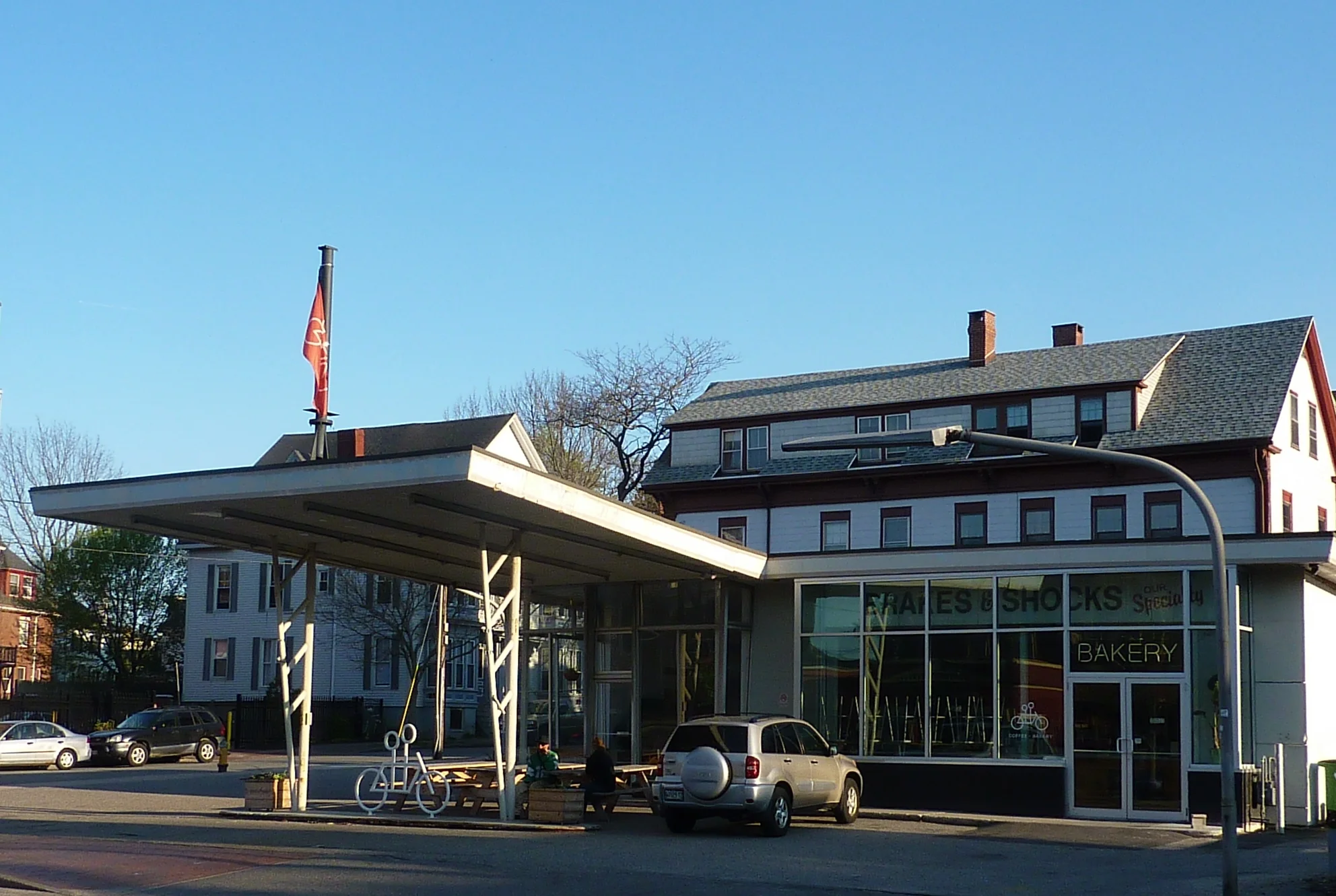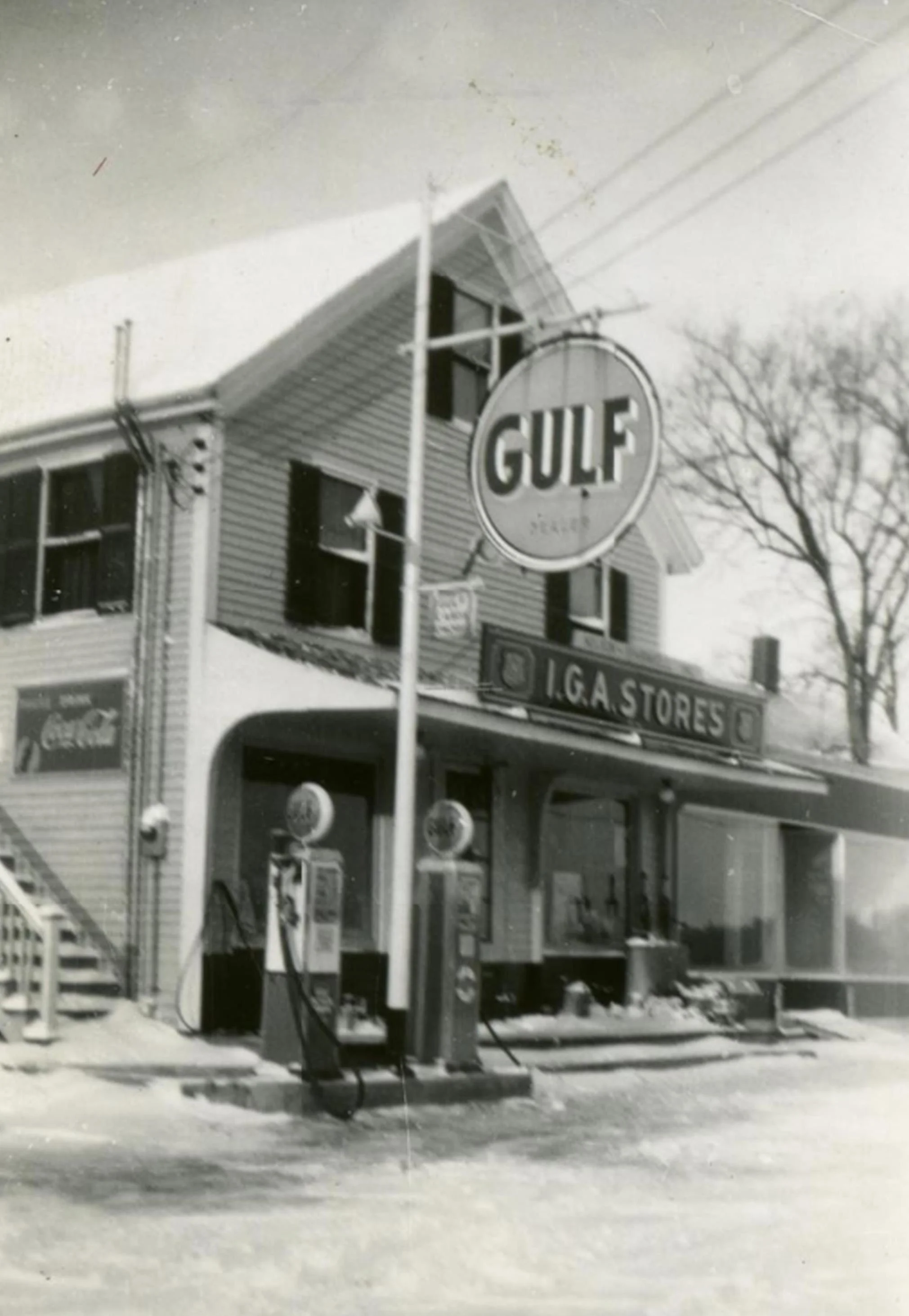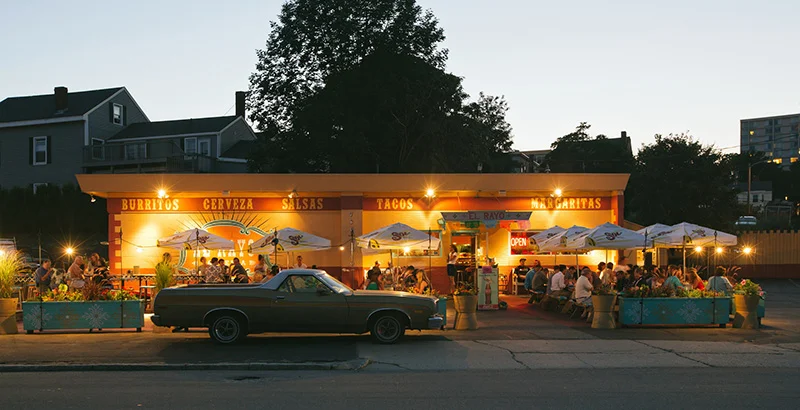Closed or vacant gas stations are a common sight in American cities and towns, but in Greater Portland, these small commercial buildings are gaining new lives. Greater Portland’s restaurateurs have been making use of these iconic 20th century buildings to house restaurants and coffee shops for several years, preserving the character of these small buildings and celebrating their unique place in the transportation and cultural history of our community.
Tandem Coffee’s bakery and coffee shop at 742 Congress Street is in a former gas station that was later converted to a laundry. One of the newest examples is Otto Pizza's South Portland location in a former gas station at 159 Cottage Road. For many years El Rayo Taqueria’s Portland location was in a former gas station on the corner of High and York Streets. While that building was recently demolished to make way for a new apartment complex, their Scarborough location is in a former Cumberland Farms gas station and store.
Gas stations are symbolic of this country’s early 20th century transportation revolution when street cars and trolleys were replaced as the primary method of transportation by the automobile. While the earliest gas stations were often just a single gas pump in front of an existing store, they evolved into a unique building form in the mid 20th century. Almost all stations were small in scale with typical features like a canopy over the gas pumps or if the station offered auto repairs, one or two large overhead garage doors to access the attached service bays.
These small buildings present several challenges to redevelopment, the most daunting is the environmental hazards that may be associated with its historic use. In 2012 the City of South Portland turned down the chance to bid on the gas station at 159 Cottage Road now occupied by Otto because of a Maine DEP report from 2011 stating the gas station’s owners had not completed remediation of contaminated soil on the site.
Another challenge to redevelopment is their size. The Szanton Company removed a former gas station near the intersection of Congress and Mellen Streets several years ago for their six-story Walker Terrace development. In a city with high land values, the best use of a site may not be a small building with a large underutilized parking lot.
However, the small scale of former gas stations can be advantageous to small businesses or start-ups. The large paved areas provide ample parking for a business and can serve as an outdoor seating space. At their former Portland location, El Rayo made good use of their overly large paved site with plentiful outdoor seating in good weather.
In South Portland, Otto's has some outdoor seating and utilizes the former garage bays to open up the interior dining area to the exterior on warm days. Otto's also celebrates the history of its building with its interior and exterior signage.
Gas stations are generally considered eyesores and out of context in historic neighborhoods. However, small local businesses have the opportunity to use signage, plantings and exterior materials and colors to help to harmonize their buildings into their neighborhoods in a way a gas station chain may not. Yordprom Coffee Company at 722 Congress Street is in a former service station later used as offices for Portland Magazine. The building’s paint color and planting beds help to harmonize the 20th century building with its historic neighboring buildings on Walker Street.





